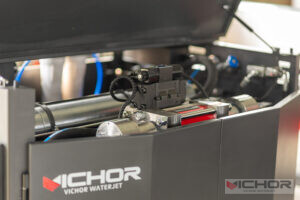
Super Water Jet: How This Technology is Revolutionizing Modern Industries
In today’s fast-paced industrial world, innovation drives efficiency and precision. One such groundbreaking technology making waves across various sectors is the super water jet. This powerful tool harnesses the force of high-pressure water to perform tasks that were once considered challenging or impossible. From cutting tough materials to cleaning stubborn surfaces, the super water jet offers a versatile and eco-friendly solution. In this article, we’ll dive deep into what makes the super water jet so effective, exploring its mechanisms, applications, benefits, challenges, and future prospects. By the end, you’ll have a comprehensive understanding of why the super water jet is becoming a go-to choice for many industries.
What is a Super Water Jet?
A super water jet refers to an advanced system that utilizes extremely high-pressure water, often mixed with abrasive materials, to cut, clean, or shape various substances. Unlike traditional mechanical tools, the super water jet relies on the kinetic energy of water accelerated to supersonic speeds. This technology has evolved over decades, with roots in industrial applications where precision and minimal heat-affected zones are critical. Essentially, a super water jet operates by forcing water through a narrow nozzle at pressures that can exceed 60,000 psi, creating a focused stream capable of slicing through metals, composites, and even stone. The term “super water jet” emphasizes its superior performance compared to standard water jets, thanks to enhancements in pressure control, nozzle design, and automation. This makes the super water jet a standout in fields requiring fine details and clean edges without thermal distortion.
How Super Water Jet Technology Works
The operation of a super water jet is based on straightforward yet highly engineered principles. At its core, the system consists of a high-pressure pump, an intensifier, a nozzle, and often an abrasive delivery system. First, water is pressurized using a pump that can generate immense force, typically ranging from 30,000 to 90,000 psi. This pressurized water is then directed through a small orifice in the nozzle, where it accelerates to speeds comparable to sound waves. In many super water jet setups, abrasives like garnet are injected into the stream to enhance cutting power for harder materials. The result is a coherent jet that can erode or cut surfaces with pinpoint accuracy. Key components include the control software that guides the jet along predefined paths, ensuring repeatability and precision. The super water jet’s ability to operate without generating heat is a major advantage, as it prevents material warping or hardening. This cold-cutting process is why the super water jet is favored in industries like aerospace and automotive, where material integrity is paramount.
Applications of Super Water Jet in Various Industries
The versatility of the super water jet allows it to be employed across a wide array of sectors. In manufacturing, it’s used for cutting complex shapes from metals, plastics, and ceramics, enabling the production of intricate parts for machinery and consumer goods. The automotive industry relies on the super water jet for trimming components and deburring edges without altering material properties. In aerospace, the super water jet cuts lightweight composites and alloys with high precision, reducing waste and improving safety. Construction and architecture benefit from its ability to shape stone, tiles, and glass for custom designs. Additionally, the super water jet is instrumental in cleaning applications, such as removing rust from ships or paint from surfaces, thanks to its non-abrasive nature when used without additives. Even the food industry uses specialized super water jet systems for cutting products like frozen foods or baked goods, ensuring hygiene and minimal product damage. This broad applicability underscores why the super water jet is considered a transformative tool in modern engineering.
Advantages of Using Super Water Jet Systems
Adopting a super water jet comes with numerous benefits that set it apart from conventional methods. Firstly, it offers exceptional precision, capable of cutting with tolerances as tight as 0.1 mm, which is crucial for high-stakes industries like medical device manufacturing. Secondly, the super water jet is environmentally

friendly, as it uses water—a renewable resource—and produces no harmful fumes or dust, aligning with green initiatives. Thirdly, its cold-cutting nature eliminates heat-affected zones, preserving material strength and reducing the need for post-processing. Fourth, the super water jet is highly versatile, handling a wide range of materials from soft rubber to hardened steel without tool changes. Fifth, it enhances safety by minimizing sparks and reducing the risk of fires, making it suitable for hazardous environments. Lastly, the super water jet can lead to cost savings over time through reduced material waste and lower energy consumption compared to laser or plasma cutting. These advantages make the super water jet an attractive investment for businesses aiming to boost productivity and sustainability.
Challenges and Limitations of Super Water Jet Technology
Despite its many strengths, the super water jet is not without challenges. One significant limitation is the initial investment cost, as high-pressure pumps and advanced control systems can be expensive to purchase and install. Maintenance is another concern; components like nozzles and seals wear out quickly due to the extreme pressures, requiring regular replacements and downtime. Additionally, the super water jet can be slower than some alternatives, such as laser cutters, when processing very thick materials, which might impact high-volume production lines. Water consumption and disposal can also pose issues, especially in arid regions or where wastewater containing abrasives must be treated. Noise levels during operation are relatively high, necessitating hearing protection and soundproofing measures. Finally, achieving optimal performance with a super water jet demands skilled operators who understand the nuances of pressure settings and abrasive mixing, which can involve a learning curve. Addressing these challenges through technological advancements and training is key to maximizing the super water jet’s potential.
The Future of Super Water Jet Innovations
The evolution of the super water jet is poised to address current limitations and expand its capabilities. Research is focused on increasing efficiency through smarter pumps that reduce energy use and improve pressure stability. Automation and AI integration are on the rise, enabling real-time adjustments for better accuracy and faster processing times. Environmental innovations include water recycling systems and biodegradable abrasives, making the super water jet even more sustainable. In terms of applications, we may see the super water jet adopted in emerging fields like renewable energy, for cutting wind turbine components, or in healthcare for precise surgical tools. Miniaturization could lead to portable super water jet devices for on-site repairs and artistic endeavors. Collaborations with robotics might yield fully autonomous systems that enhance productivity in smart factories. As these advancements unfold, the super water jet is set to become more accessible and efficient, solidifying its role as a cornerstone of industrial innovation.
In conclusion, the super water jet represents a remarkable fusion of power and precision, offering solutions that transcend traditional manufacturing boundaries. Its ability to cut, clean, and shape without heat damage, combined with environmental benefits, makes it a valuable asset across industries. While challenges like cost and maintenance exist, ongoing improvements are paving the way for broader adoption. By understanding the intricacies of the super water jet, businesses can leverage this technology to stay competitive and drive progress. As we look ahead, the super water jet’s potential for growth and innovation seems limitless, promising to redefine how we approach complex tasks in the years to come.
Frequently Asked Questions About Super Water Jet
Q1: What is a super water jet and how is it different from a regular water jet?
A1: A super water jet is an advanced high-pressure water jet system that operates at extremely high pressures, often exceeding 60,000 psi, and may include abrasive additives for enhanced cutting power. It differs from a regular water jet by offering superior precision, higher pressure capabilities, and better performance on tough materials like metals and composites, thanks to technological refinements in components like pumps and nozzles.
Q2: What materials can a super water jet cut effectively?
A2: A super water jet can cut a wide variety of materials, including metals (such as steel, aluminum, and titanium), composites, stone, glass, ceramics, plastics, and rubber. Its versatility allows it to handle both soft and hard substances without thermal distortion, making it ideal for applications in industries like aerospace, automotive, and construction.
Q3: Is the super water jet environmentally friendly?
A3: Yes, the super water jet is considered environmentally friendly because it primarily uses water, a renewable resource, and produces no toxic fumes or hazardous waste when used without abrasives. When abrasives are involved, eco-friendly options and water recycling systems can minimize environmental impact, aligning with sustainability goals.
Q4: What are the main maintenance requirements for a super water jet system?
A4: Maintaining a super water jet involves regular checks and replacements of wear-prone parts like nozzles, seals, and high-pressure hoses due to the extreme forces involved. It also requires monitoring water quality, cleaning filters, and ensuring the abrasive delivery system is free from clogs. Proper maintenance helps prevent downtime and ensures consistent performance.
Q5: How does the cost of a super water jet compare to other cutting technologies?
A5: The initial cost of a super water jet system can be higher than some alternatives like plasma cutters, but it often leads to long-term savings through reduced material waste, lower energy consumption, and minimal post-processing needs. Additionally, its versatility across multiple materials can offset costs by eliminating the need for multiple specialized machines.
continue reading
Related Posts
- 1371 words6.9 min read
- 1449 words7.3 min read



